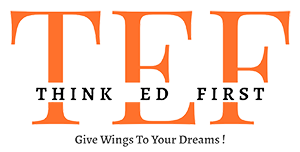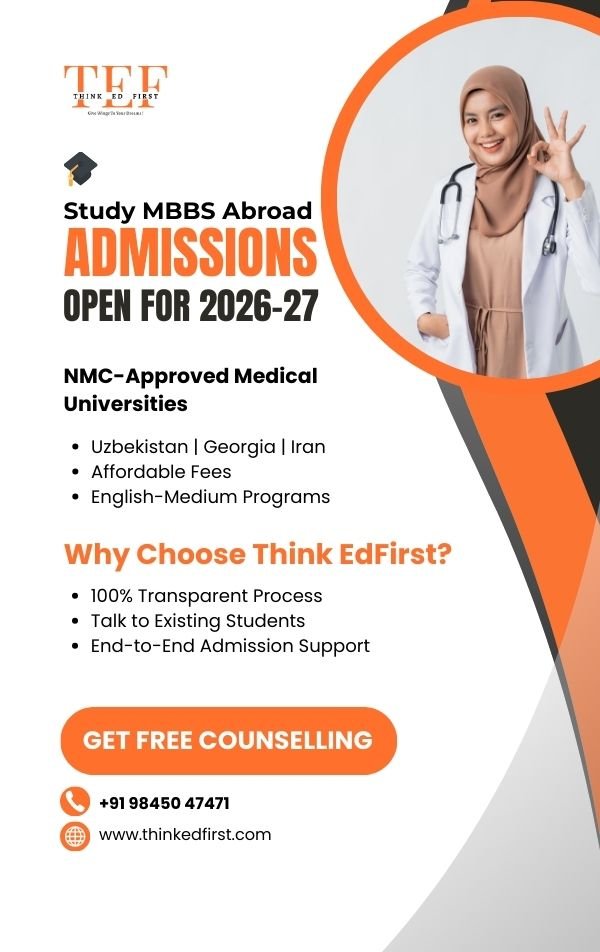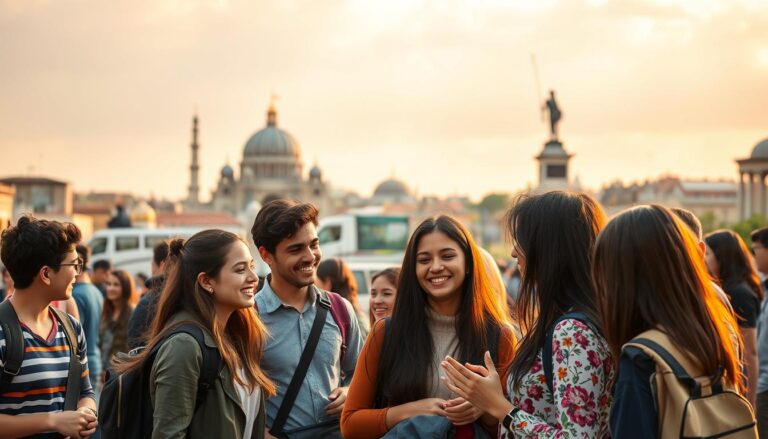Are you considering a career in medicine but worried about the high costs of education? What if we told you there’s a way to achieve your dream without breaking the bank? Russian medical universities offer an affordable yet high-quality education that’s gaining popularity among students worldwide.
With over 20,000 Indian students already enrolled, these institutions are known for their modern infrastructure, comprehensive curriculum, and global recognition. The updated fee structure for 2025 makes it even more accessible for aspiring doctors.
In this article, we’ll explore the latest rankings, admission processes, and cost breakdowns. Whether you’re curious about eligibility or want to compare tuition fees, we’ve got you covered. Let’s dive into why Russian medical universities are a top choice for students aiming for excellence in education.
Introduction to MBBS in Russia 2025
Pursuing a medical degree abroad has become a popular choice for students seeking quality education. Russian medical universities are increasingly favored for their modern curriculum, affordable fees, and global recognition. These institutions offer English-medium programs, making them accessible to international students.
State medical universities in Russia are trusted by students worldwide. They are accredited by bodies like the NMC and WHO, ensuring their degrees are recognized globally. This makes them a reliable choice for aspiring doctors.
The updated fee structure for 2025 makes studying in Russian medical colleges even more attractive. The six-year program includes a practical internship, meeting global standards. This combination of affordability and quality education is why many students choose Russia.
Here’s a comparison of tuition fees in different countries:
| Country | Annual Tuition Fees (USD) |
|---|---|
| Russia | $3,000 – $7,000 |
| India | $10,000 – $25,000 |
| USA | $20,000 – $50,000 |
| UK | $30,000 – $60,000 |
| China | $4,000 – $8,000 |
Russian medical universities provide excellent facilities and a supportive learning environment. With over 20,000 Indian students already enrolled, these institutions are a top choice for those aiming for excellence in medical education.
Why We Choose MBBS in Russia for International Students
Affordable education and global recognition make Russia a preferred choice for aspiring doctors. State medical universities offer a unique blend of quality education and cost-effectiveness, attracting students from over 160 countries.
Indian students, in particular, find Russia appealing due to its safe and culturally diverse environment. The admission process is straightforward, requiring only a NEET qualification without additional entrance exams. This accessibility makes it easier for students to secure a seat in top institutions.
Graduates from Russian medical colleges have a strong track record in the FMGE exams, ensuring their degrees are recognized globally. The low student-teacher ratio allows for personalized attention, enhancing the learning experience. Modern facilities and practical training further prepare students for successful careers.
Here’s a comparison of living costs in Russia and India:
| Expense | Russia (Monthly) | India (Monthly) |
|---|---|---|
| Accommodation | INR 10,000 – 15,000 | INR 8,000 – 12,000 |
| Food | INR 5,000 – 8,000 | INR 4,000 – 6,000 |
| Transport | INR 1,500 – 3,000 | INR 1,000 – 2,000 |
| Miscellaneous | INR 2,000 – 4,000 | INR 1,500 – 3,000 |
Studying in Russia provides a comprehensive education at a fraction of the cost compared to other countries. For Indian students, it’s an opportunity to achieve their dreams without financial strain.
Global Recognition and Accreditation of Russian Medical Colleges
Global recognition and accreditation are key factors for international students. Russian medical colleges are renowned for their high standards and global acceptance. Institutions like Kazan State Medical University hold accreditations from NMC, WHO, WFME, ECFMG, and FAIMER. These accreditations ensure that degrees are recognized worldwide.
Federal universities in Russia have a long-standing reputation for excellence. They attract students from over 160 countries, including a significant number of Indian students. The curriculum aligns with international standards, preparing graduates for global healthcare challenges.
Accreditations like NMC and WHO affirm the quality of education. They also ensure that graduates are eligible to practice medicine in their home countries. This trust factor makes Russian medical colleges a top choice for aspiring doctors.
Here’s why these accreditations matter:
- Degrees are recognized globally, opening doors to international opportunities.
- Curriculum meets the highest standards, ensuring comprehensive learning.
- Graduates are eligible for licensing exams like FMGE in India.
For Indian students, these accreditations provide assurance and confidence. They can pursue their dreams without worrying about the validity of their degrees. Russian medical colleges offer a reliable pathway to a successful medical career.
Curriculum and Duration of MBBS in Russia
The journey to becoming a doctor requires a structured and comprehensive curriculum. In Russian medical colleges, the program spans six years, combining theoretical knowledge and practical training. This approach ensures that international students receive a well-rounded education.
Theoretical Studies and Classroom Learning
The first five years focus on theoretical courses. Subjects like anatomy, physiology, and biochemistry form the foundation. Students engage in intensive classroom learning, supported by modern facilities and experienced faculty.
This phase prepares students for the complexities of medical science. It also aligns with European and global standards, ensuring graduates are well-equipped for their careers.
Clinical Rotations and Practical Training
The final year is dedicated to clinical rotations. Students gain hands-on experience in affiliated hospitals. This practical training is crucial for developing real-world skills.
Here’s a breakdown of the curriculum phases:
| Phase | Duration | Focus |
|---|---|---|
| Theoretical Studies | 5 Years | Classroom learning, foundational subjects |
| Clinical Rotations | 1 Year | Hands-on training in hospitals |
This blend of theory and practice ensures that students are ready for global healthcare challenges. For those considering alternatives, the MBBS program in Uzbekistan offers a similar structure with its own unique advantages.
Understanding MBBS in Russia 2025 fees and Cost Advantages
Studying medicine abroad doesn’t have to mean financial stress. The tuition fee in Russian medical colleges is highly competitive, making it an attractive option for students worldwide. Annual costs range from INR 2.4 Lakhs to INR 5.1 Lakhs, significantly lower than in India or Western countries.
- Affordable tuition fees alleviate financial burdens for students and their families.
- Supplementary expenses like hostel and living costs are equally economical.
- The quality of education and infrastructure remains uncompromised despite the low costs.
Compared to India, where private medical colleges charge exorbitant fees, Russian institutions offer better value for money. For instance, the total budget for a six-year program, including tuition, hostel, and living expenses, ranges from INR 20 Lakhs to INR 40 Lakhs. This is far more manageable than the fees in countries like the USA or UK.
Top medical colleges in Russia ensure that students receive a world-class education without the financial strain. This affordability, combined with global recognition, makes it a preferred choice for aspiring doctors.
Detailed Fee Structure: Tuition, Hostel, and Living Costs
Understanding the financial aspects of studying medicine abroad is crucial for making informed decisions. We provide a comprehensive breakdown of costs to help students plan their budgets effectively.
Tuition Fees Comparison Across Universities
Tuition fees vary across top medical institutions. For example, Bashkir State Medical University charges 490,000 Rubles annually, while Crimea Federal University’s fees are slightly higher. Here’s a comparison of annual tuition fees in INR:
- Bashkir State Medical University: ₹4,60,500
- Crimea Federal University: ₹5,00,000
- Ivanovo State Medical University: ₹4,80,000
These fees are significantly lower compared to private medical colleges in India, making Russian universities an affordable choice.
Hostel and Additional Living Expense Overview
Accommodation and living costs are equally budget-friendly. Hostel fees range from ₹15,000 to ₹48,000 annually, depending on the university. Additional expenses include:
- Medical insurance: ₹5,250 per year
- Visa extension: ₹1,500 to ₹2,000 annually
- Food and transportation: ₹5,000 to ₹15,000 monthly
We ensure transparency in the fee structure, so students can plan their finances without surprises.
Admission Process and Required Documents
Securing admission to a medical program abroad requires careful planning and preparation. For students aiming to pursue a mbbs degree, the process in Russia is straightforward and student-friendly. We guide you through every step to ensure a smooth application experience.
Step-by-Step Application Guidelines
The admission process begins with selecting a university that aligns with your goals. Once chosen, you’ll need to submit an online application along with the required documents. Universities typically process applications on a first-come, first-served basis, so early submission is recommended.
After your application is reviewed, you’ll receive an invitation letter from the university. This letter is essential for applying for a student visa. The next step involves completing visa formalities and preparing for your journey. For more details on affordable options, check out our guide on studying mbbs abroad at low cost.
Essential Document Checklist
To ensure a hassle-free admission process, it’s crucial to have all the necessary documents ready. Below is a checklist of the essential paperwork required for applying to a mbbs course in Russia:
| Document | Details |
|---|---|
| Academic Mark Sheets | 10th and 12th-grade certificates with at least 50% marks in PCB subjects. |
| NEET Scorecard | Mandatory for Indian students with a minimum score of 137. |
| Passport | Valid for at least 18 months from the date of application. |
| Medical Certificate | Proof of good health and fitness. |
| Passport-Sized Photos | 30-40 photos (4.5 x 3.5 cm) for various formalities. |
By preparing these documents in advance, you can avoid last-minute delays and ensure a seamless admission process. Start early to secure your spot in a top medical university and take the first step toward a successful career in medicine.
Eligibility Criteria for Indian Students
For Indian students aiming to study medicine abroad, understanding the eligibility criteria is the first step. These requirements ensure that candidates are academically prepared and meet global standards. The process is straightforward, making it accessible for aspiring doctors.
To qualify, students must have completed their 10+2 education with at least 50% marks in Physics, Chemistry, and Biology. A valid NEET scorecard is also mandatory, ensuring compliance with the National Medical Commission’s guidelines. This combination of academic and entrance exam criteria ensures a strong foundation for medical studies.
There is a minimum age requirement of 17 years, with no fixed upper limit. This flexibility allows students from diverse backgrounds to pursue their dreams without age-related barriers. The criteria are designed to be inclusive and supportive of all eligible candidates.
Meeting these requirements opens the door to quality education at top universities. The eligibility standards align with global benchmarks, ensuring that graduates are well-prepared for their medical careers. For Indian students, this is a reliable pathway to achieving their goals.
Course Medium and Language Aspects
Language plays a crucial role in shaping the learning experience for international students. Most Russian medical universities offer courses in English, ensuring that students from diverse backgrounds can focus on their studies without language barriers. This approach makes it easier for Indian students to adapt and excel academically.
Advantages of English-Medium Instruction
English-medium instruction allows students to start learning from day one. There’s no need to spend extra time mastering a new language before diving into the curriculum. This benefit is particularly valuable for students who want to pursue their medical education without delays.
Clear communication in English also facilitates academic excellence. Students can easily understand lectures, participate in discussions, and complete assignments. This clarity helps them build a strong foundation in medical science.
Russian Language Training for Clinical Practice
While the primary medium of instruction is English, the curriculum includes Russian language training. This is especially useful during clinical rotations, where students interact with local patients. Learning basic Russian enhances their ability to communicate effectively in real-world medical settings.
Multilingual support contributes to a smoother adjustment for international students. It helps them navigate daily life and build connections with local communities. This dual-language approach ensures a well-rounded educational experience.
| University | Primary Medium | Russian Language Training |
|---|---|---|
| Kazan State Medical University | English | Included in curriculum |
| Crimea Federal University | English | Optional course |
| Bashkir State Medical University | English | Mandatory for clinical practice |
By offering English-medium instruction alongside Russian language training, these universities provide a supportive environment for international students. This combination ensures that students are well-prepared for both academic and professional challenges.
Cultural and Living Experience in Russia
Studying abroad offers more than just academic growth; it’s a journey into new cultures and experiences. For students pursuing their dreams, Russia provides a vibrant and enriching environment. The country’s cultural diversity and welcoming atmosphere make it an ideal destination for international learners.
One of the highlights for Indian students is the availability of familiar cuisine. Major cities like Moscow and Kazan have Indian restaurants and grocery stores, ensuring that students can enjoy their favorite meals. This cultural comfort helps ease the transition and makes daily life more enjoyable.
Living in Russia is also affordable, which is a significant advantage for students. Monthly expenses, including accommodation, food, and transportation, are budget-friendly. Universities often provide modern amenities like hostels, libraries, and recreational facilities, ensuring a comfortable stay.
Here are some key aspects of the cultural and living experience:
- Cultural hubs in cities offer opportunities to explore art, music, and history.
- Recreational facilities like sports complexes and student clubs enhance daily life.
- Support services, including counseling and language assistance, are readily available.
Beyond academics, students can immerse themselves in local traditions and festivals. This cultural exchange enriches their personal growth and broadens their perspectives. For those pursuing their dreams, Russia offers a perfect blend of education and cultural immersion.
State and Federal Medical Universities: Quality Education
Choosing the right institution is a critical step for students aiming for a medical career. State and federal medical universities are renowned for their commitment to academic excellence and global recognition. These institutions offer a blend of tradition and modern teaching methods, ensuring students receive a well-rounded education.
Top-Rated Universities and Their Features
Several state and federal universities stand out for their exceptional programs. Kazan State Medical University, for instance, is known for its long history and cutting-edge research facilities. Bashkir State Medical University is another top choice, offering modern infrastructure and a strong focus on practical training.
These institutions are globally accredited, ensuring their degrees are recognized worldwide. Graduates from these colleges often achieve high FMGE pass percentages, making them a reliable choice for Indian students.
Comparative Advantages of State Medical Institutions
State medical universities offer several advantages over private institutions. They are often more affordable, with lower tuition fees and government subsidies. This makes them accessible to a wider range of students.
Additionally, these universities provide a better return on investment. With state-of-the-art facilities and experienced faculty, students gain the skills needed for a successful medical career. The emphasis on research and practical training further enhances their learning experience.
Here’s a comparison of key features:
| University | Inception Year | Global Accreditation | FMGE Pass Percentage |
|---|---|---|---|
| Kazan State Medical University | 1814 | NMC, WHO | 25% |
| Bashkir State Medical University | 1932 | NMC, WHO | 22% |
For Indian students, these universities provide a pathway to quality education and global opportunities. Their commitment to excellence ensures that graduates are well-prepared for the challenges of the medical profession.
Comparing MBBS in Russia vs MBBS in India
Deciding where to study medicine involves weighing costs, quality, and opportunities. Both Russia and India offer unique advantages, but understanding the differences can help you make an informed choice. Let’s explore the key aspects of medical education in these two countries.
One of the most significant differences is the cost. Studying in Russia is more affordable, with tuition fees ranging from ₹15 lakhs to ₹45 lakhs for the entire program. In contrast, private medical colleges in India can cost between ₹60 lakhs to ₹1.5 crores. This makes Russia a budget-friendly option for many students.
Another factor is the duration of the program. In India, the course lasts 5.5 years, including a one-year paid internship. In Russia, it’s a six-year program with a similar internship period. Both systems provide comprehensive training, but the additional time in Russia allows for more in-depth learning.
Class sizes also differ. Russian universities often have smaller groups, enabling personalized attention from faculty. This can enhance the learning experience and ensure better academic support. In India, larger class sizes are common, especially in government colleges.
Here’s a quick comparison of key features:
| Aspect | Russia | India |
|---|---|---|
| Tuition Fees (Total) | ₹15-45 Lakhs | ₹60 Lakhs-1.5 Crores |
| Course Duration | 6 Years | 5.5 Years |
| Class Size | Smaller | Larger |
| Global Recognition | High | Moderate |
Language is another consideration. Most Russian universities offer English-medium programs, making it easier for international students to adapt. In India, the medium of instruction is typically English or regional languages, depending on the institution.
Finally, the quality of education and global recognition of degrees favor Russian institutions. Many universities are accredited by global bodies like WHO and NMC, ensuring their degrees are accepted worldwide. This opens doors to international career opportunities.
Choosing between Russia and India depends on your priorities. If affordability, smaller class sizes, and global recognition matter most, Russia could be the ideal choice. However, if staying closer to home and accessing a larger domestic market is your goal, India might be the better option.
Student Support and Practical Training Opportunities
Practical training is a cornerstone of medical education, and Russian institutions excel in providing hands-on experience. These opportunities are designed to bridge the gap between classroom learning and real-world medical practice, ensuring students are well-prepared for their careers.
Clinical Exposure and Hands-On Facilities
Students benefit from structured clinical rotations that take place in modern hospitals. These rotations allow them to work with patients under the guidance of experienced professionals. This exposure is crucial for developing practical skills and confidence in a clinical setting.
Simulation labs are another key feature of the training program. These labs replicate real-life medical scenarios, enabling students to practice procedures in a controlled environment. This hands-on approach enhances their ability to handle complex situations effectively.
Hospital attachments further enrich the learning experience. Students gain insights into various medical specialties, from surgery to pediatrics. This comprehensive training ensures they are well-rounded and ready to tackle diverse challenges in their careers.
The combination of theoretical knowledge and practical exposure is what sets these programs apart. It ensures that graduates are not only knowledgeable but also skilled and confident in their abilities. This holistic approach is why many students choose this path for their medical education.
Guidelines for Visa and Travel Arrangements
Navigating the visa process is a crucial step for students planning to study abroad. Proper preparation ensures a smooth transition and avoids unnecessary delays. We’ve outlined the key steps and requirements to help you secure your student visa efficiently.
First, you’ll need an invitation letter from the university. This document is essential for your visa application. Along with the letter, ensure your passport is valid for at least 18 months from the date of application. A medical certificate confirming your fitness is also required.
Visa processing typically takes 3-4 weeks, so starting early is crucial. Here’s a checklist of necessary documents to prepare:
| Document | Details |
|---|---|
| Invitation Letter | Issued by the university, confirms your admission. |
| Passport | Valid for at least 18 months from the application date. |
| Medical Certificate | Confirms good health and fitness for study. |
| Passport-Sized Photos | 30-40 photos (4.5 x 3.5 cm) for various formalities. |
Once your visa is approved, make travel arrangements well in advance. Book flights and accommodations early to avoid last-minute hassles. We recommend arriving a few days before the semester starts to settle in and adjust to the new environment.
Here are some tips to avoid common pitfalls:
- Double-check all documents for accuracy before submission.
- Keep copies of your passport and visa for emergencies.
- Stay updated on any changes in visa regulations.
Starting the visa process early ensures a smooth enrollment and allows you to focus on your training and studies. With proper preparation, you can embark on your educational journey with confidence.
Safety, Accommodation, and Student Life in Russia
Living and studying in a new country can be both exciting and challenging. For international students, safety and comfort are top priorities. Russian universities prioritize creating a secure and supportive environment, ensuring students can focus on their studies without worries.
Campuses are equipped with modern security measures, including CCTV surveillance and 24/7 security personnel. Neighborhoods around universities are known for their safety, making it easier for students to explore and adapt to their new surroundings.
Accommodation options are diverse, catering to different preferences and budgets. Most universities offer state-of-the-art hostels with essential amenities like Wi-Fi, laundry facilities, and common areas. These hostels are located within or near the campus, providing convenience and fostering a sense of community.
For those who prefer private housing, affordable apartments are available in nearby areas. Monthly rent typically ranges from INR 10,000 to 15,000, depending on the location and facilities. This flexibility allows students to choose the option that best suits their needs.
Living costs in Russia are budget-friendly, especially when it comes to food. Students can enjoy meals at university canteens for as low as INR 100-150 per meal. Groceries are equally affordable, with monthly expenses averaging INR 5,000 to 8,000. This makes it easier for students to manage their budgets without compromising on quality.
Beyond academics, universities offer a range of services to enhance student life. Counseling centers provide emotional and academic support, while student clubs and recreational activities foster personal growth and social connections. These resources ensure a well-rounded experience for every student.
The government and university policies further contribute to a safe and comfortable stay. Regular safety audits and support services are in place to address any concerns. This commitment to student welfare makes Russia an ideal destination for international learners.
Conclusion
Embarking on a medical career abroad opens doors to unparalleled opportunities. Throughout this article, we’ve highlighted the advantages of pursuing your studies in a globally recognized institution. The affordable fee structure, combined with high-quality education, makes it an attractive option for aspiring doctors.
We’ve emphasized the ease of the admission process and the supportive environment provided by these universities. With affordable living costs per month and comprehensive student support systems, you can focus on your education without financial stress.
For those considering alternatives, exploring options like MBBS without NEET can also be a viable path. Making an informed decision about your future is crucial, and we encourage you to take the next step toward achieving your dreams.
Choosing the right institution can lead to a successful and fulfilling medical career. Start your journey today and unlock the potential of a world-class education.




